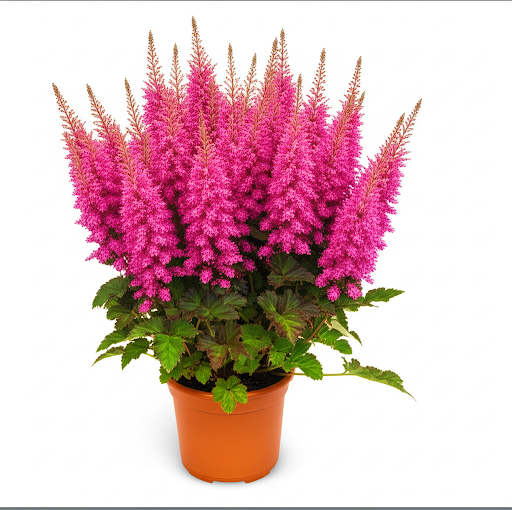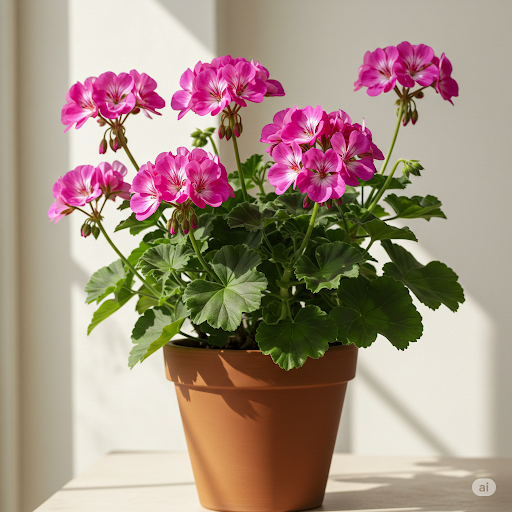Common Pests & Diseases of Potted Astilbe: Identify and Control
Potted Astilbe, while generally robust perennials, can still occasionally face issues with pests and diseases, especially when grown in containers where conditions might not always be ideal. Recognizing the signs of trouble early is key to protecting your beautiful plants.
This article will cover some common pests and diseases that might affect your container-grown Astilbe and how to identify and manage them effectively.
Prevention: Your First Line of Defense
The best way to deal with pests and diseases is to prevent them in the first place. A healthy, vigorous plant grown in the right conditions is always less susceptible to problems.
- Provide Proper Care: Ensure your Astilbe is getting the right amount of light (part shade), consistent moisture (without being waterlogged), appropriate soil, and adequate nutrition. A stressed plant is an invitation for pests and diseases.
- Ensure Good Air Circulation: Crowding plants can lead to stagnant air, which encourages fungal diseases like powdery mildew. Ensure there's space around your potted Astilbe.
- Water Correctly: Avoid overhead watering, which can keep foliage wet and promote leaf spot or mildew. Water the soil directly at the base of the plant. Crucially, avoid overwatering or using poorly draining soil, as this is the main cause of root rot.
- Keep it Clean: Remove any fallen leaves, dead stems, or other debris from the surface of the potting mix and around the pot. This eliminates potential hiding spots for pests and sources of fungal spores.
- Inspect Regularly: Make it a habit to look closely at your Astilbe's leaves (undersides too!), stems, and the soil surface every time you water. Catching a problem when it's small is much easier than dealing with a full-blown infestation or infection.
Common Pests of Potted Astilbe
While Astilbe isn't usually a magnet for pests, a few can sometimes cause issues:
Spider Mites: These tiny arachnids are difficult to see with the naked eye but can cause significant damage.
- Signs: Stippled or speckled appearance on leaves (tiny pale dots), yellowing foliage, fine webbing, often in leaf axils or on the undersides of leaves. They thrive in hot, dry conditions, which can occur quickly in containers.
- Control: Isolate the affected plant. Rinse foliage thoroughly with a strong spray of water, especially the undersides of leaves. Repeat every few days. For more persistent issues, use insecticidal soapor Neem oil, ensuring thorough coverage, especially where mites are hiding.
Aphids: Small, soft-bodied insects that cluster on new growth, buds, or the undersides of leaves. They suck plant sap.
- Signs: Visible clusters of small green, black, pink, or white insects; distorted or stunted new growth; sticky residue (honeydew) on leaves, which can attract ants or lead to sooty mold.
- Control: For small infestations, simply blast them off with a strong stream of water or crush them manually. For larger numbers, apply insecticidal soap or Neem oil directly to the aphid clusters.
Scale: Less common on Astilbe but possible. These look like small bumps (hard or soft) on stems and leaves.
- Signs: Small, immobile bumps (often brown, black, or white) on stems or leaf veins; yellowing or stunted growth; honeydew and sooty mold.
- Control: For small numbers, scrape them off carefully. Insecticidal soap or horticultural oil can be effective, but require thorough coverage as the shell protects them. Repeat applications may be necessary.
Common Diseases of Potted Astilbe
Diseases are often linked to environmental conditions, especially moisture levels.
Root Rot: This is the most serious and unfortunately, quite common issue for potted Astilbe if watering and soil aren't managed correctly. It's caused by various fungi that thrive in waterlogged soil.
- Signs: Wilting or drooping foliage even though the soil is wet; yellowing or browning leaves; stunted growth; the crown or roots become mushy and dark.
- Control: Prevention is paramount! Ensure excellent drainage and avoid overwatering. Once root rot sets in, it's very difficult to cure. If caught very early, you can try repotting into fresh, well-draining soil after trimming away any soft, dark, rotten roots. However, often the damage is too extensive, and the plant may need to be discarded to prevent the fungi from spreading.
Powdery Mildew: A fungal disease that appears as white, powdery patches on leaves, stems, and sometimes flowers.
- Signs: White, dusty coating on the surface of foliage. Severe infections can stunt growth or distort leaves. It often occurs in conditions with high humidity, poor air circulation, or significant temperature swings between day and night.
- Control: Improve air circulation around the plant. Remove and discard affected leaves promptly (do not compost them). For persistent issues, apply a fungicide labeled for powdery mildew, such as Neem oil (which has fungicidal properties) or other approved organic or chemical options.
Leaf Spot: Various fungi can cause spots on Astilbe leaves, often more prevalent in humid conditions or with overhead watering.
- Signs: Small brown, black, or tan spots, sometimes with a border, appearing on leaves.
- Control: Remove and discard affected leaves. Avoid overhead watering. Improve air circulation. Mild cases usually don't require chemical treatment. In severe cases, fungicides labeled for leaf spot can be used, but prevention through cultural practices is more effective.
When to Take Action
Check your potted Astilbe regularly. At the first sign of stippling (spider mites), sticky leaves (aphids/scale), wilting despite wet soil (root rot), or powdery patches (mildew), take action immediately. Early intervention gives you the best chance of controlling the problem and saving your plant.
By providing good overall care and keeping a watchful eye, you can help your potted Astilbe stay healthy and fend off most potential pest and disease issues.
Article copyright by GreenShip


Comments
Post a Comment